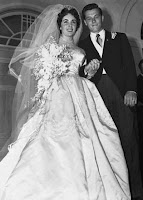Let's start with Best Supporting Actor and Actress in a Motion Picture. This category always seems unfair to me. Unlike the Best Actor, Actress, and Picture categories, all drama, comedy, and musical performances get lumped together. This always inevitably means that a dramatic performance will win over a comedic performance. It's a disappointment I've heard many share, yet it still happens every year. Not that I believe the dramatic performances were bad. I just wish comedic performances got more credit. This year, however, there are no comedic performances in these two categories. For Actor, I'm hoping either Kenneth Branagh or Albert Brooks wins. Branagh does a superb job portraying Sir Laurence Olivier in "My Week With Marilyn." And Brooks made a magnificent, against-character choice to play a LA mobster in "Drive." As for Actress, I would be happy if it went to either of "The Help" actresses, Jessica Chastain or Octavia Spencer, but by earlier awards, I think it's going to Spencer (which is much, much deserved).
Best Actor and Actress in a Motion Picture - Drama has several wonderful performances in it, but quite a few that I just don't understand. Wooooo, Glenn Close plays a woman pretending to be man in "Albert Nobbs," but have any of the voters actually seen that movie?? It's horrible! There are no likable characters, no arch to anyone, and no real resolution to a story you don't care about. Also, even though it's named "Albert Nobbs," he really doesn't have much influence on the story at all. And Nobb's (Glenn Close's character) reasoning for pretending to be a man makes no sense at all. I love Close, but this is not her best work. And for the men, I don't see what the big deal is about "Moneyball." It's an interesting story, but other than that, no big deal, movie-wise. Brad Pitt gave a much, much better performance in "Inglourious Basterds." As for the rest, Clooney is good, but he's still being Clooney. Ryan Gosling should have been nominated for "Drive" instead of "Ides of March." And once again, Meryl Streep gives an amazing performance, but it feels repetitive. My two hopes are Viola Davis for "The Help" and Michael Fassbender for "Shame."
Now, as for Best Actor and Actress in a Motion Picture - Comedy or Musical, the nominees are a little more all over the board. Like I mentioned before, the division of all these categories is odd. Most musicals that make it onto the nominees list are dramas, so putting them up against actual comedic performances is a bit unfair. Also, the definition of comedy or musical is very blurry. I would never consider "My Week with Marilyn" a comedy, so I'm guessing they submitted it as a musical, but there are only two songs in the entire film. Both "Carnage" and "Young Adult" are depressing dark comedies, but at least "Young Adult" doesn't make you want to stab your eyes out as much, just to make the arguing stop. And "The Artist," my favorite film of the year, could be labeled comedy, drama, musical, caper...okay, maybe not the last one, but putting "The Artist" in this category was clearly a PR move to get less competition. But I still hope Jean Dujardin for "The Artist" wins for Actor, and I'm guessing Michelle Williams will win for "Marilyn," though I would love Kristen Wigg to win for "Bridesmaids," the only true comedy in the bunch.
Finally, Best Picture - Drama and Musical/Comedy...Once again, the Comedy section walks a thin line of how they all fit in this category, but my bet (happily) is on "The Artist." As for Drama, everybody seems to love "The Descendants." It was a good film, but not great or worthy of all this praise. Maybe it's just me, because I'm bombarded by it more than others - but there were much better films this year. Also, again, I don't understand the craze for "Moneyball" either. Are people this year just so happy to see their teenage crushes on screen? Is that it? The other big contender, "War Horse," was good but not great. It was like Steven Spielberg really wanted to make his own "Gone with the Wind," (because he doesn't have any other epics that big in his career...riiiiiight). Anyway, it is very melodramatic. So that leaves my two tops - "The Help" and "Hugo." I think I would be happy with either of them winning.
So those are my choices for tomorrow. Let's see how well I did later. Anybody wanna make a bet? (Teehee) Until later, everyone! Enjoy your weekend.































